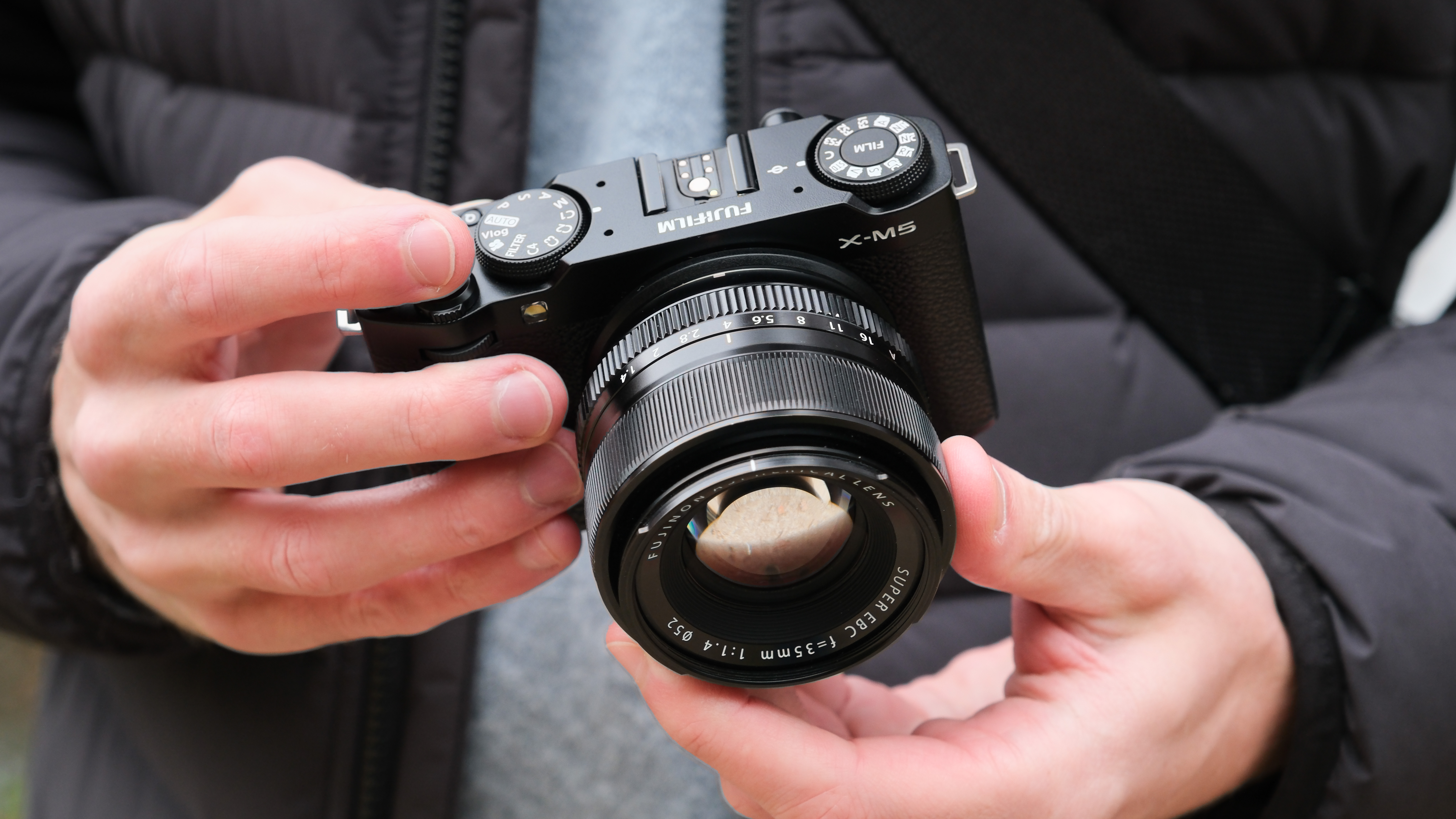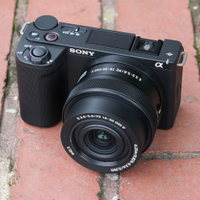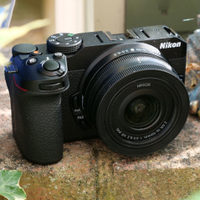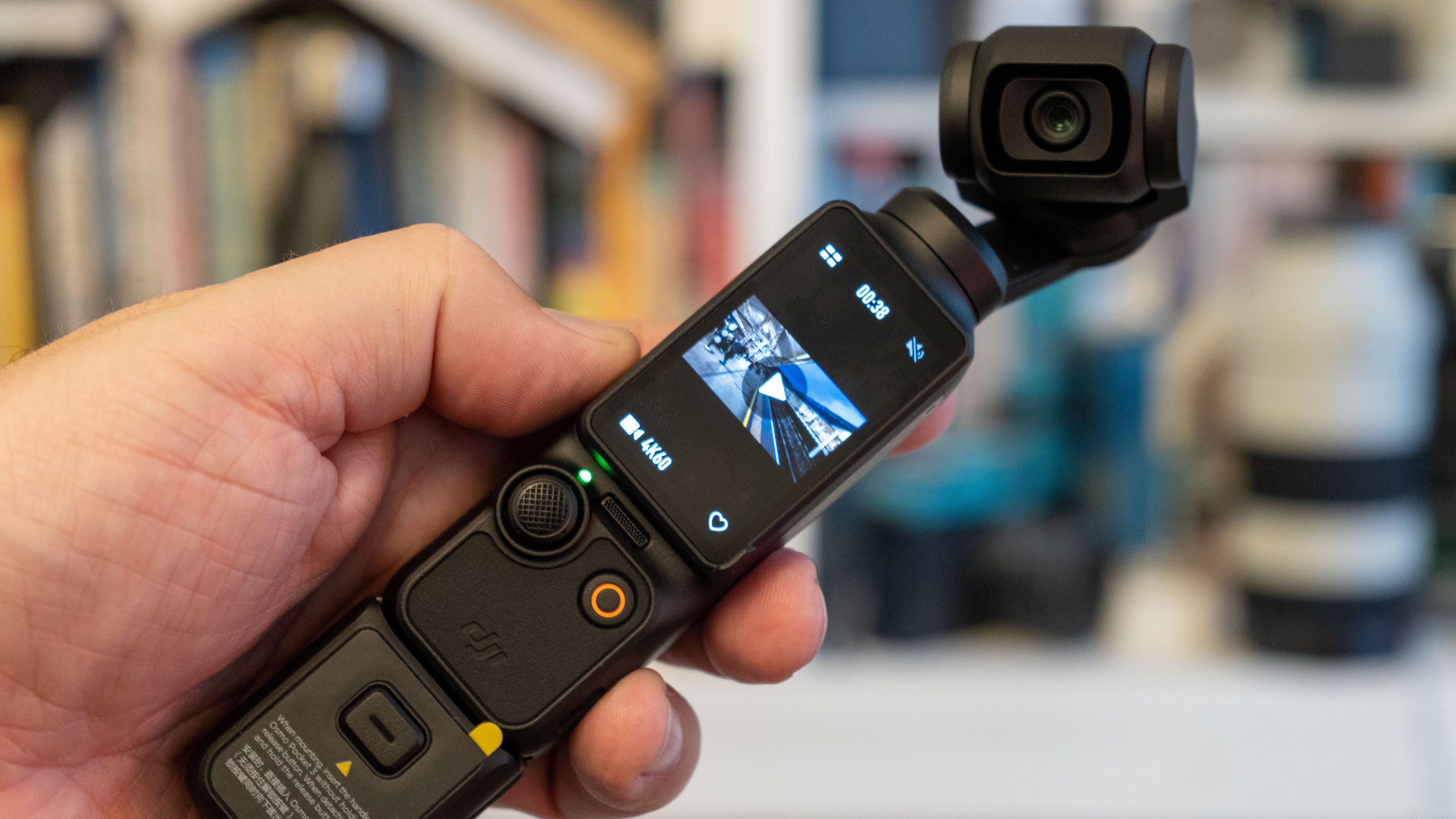Digital Camera World Verdict
I had a great time shooting with the X-M5. It’s compact, stylish, and offers excellent specs at a lower price than competitors. Ideal for vloggers, its video capabilities are impressive, although the lack of a viewfinder may be a drawback for some photographers. Image quality is top-notch.
Pros
- +
Incredibly compact
- +
6.2K open-gate video
- +
Latest processor for subject recognition and tracking
- +
Vlogging and vertical video modes
Cons
- -
No viewfinder
- -
Mediocre kit lens
- -
Large hands might struggle
Why you can trust Digital Camera World
When the Fujifilm X-T50 turned out to not quite be the X-T30 II replacement many were expecting, some speculated Fujifilm might be turning its attention away from the entry-level camera market to more premium models. However, just a few short months later, Fuji has shown up not just with a new affordable entry-level model, but one that defies the entry-level label.
The Fujifilm X-M5 is the sequel to the original X-M1 released in 2013 – although with a naming jump to reflect Fujifilm's current fifth generation of camera bodies. A compact rangefinder-style body – although without the viewfinder to qualify it as such – the X-M5 is a pocket-sized camera compatible with Fujifilm's range of XF lenses.
With the market for content creation cameras exploding, the X-M5 is directly aimed at vloggers and video makers with a combination of ease-of-use video modes, a rotatable screen, updated microphones, and powerful video specs. The headline spec being 6.2K open-gate video, which for a lot of content creators out there is a huge deal that sets the X-M5 a step above similar models from the likes of Sony and Nikon. Although with Fujifilm's beloved film simulations and recipes, improved autofocus, and a solid 26.1MP sensor, stills photographers might find a lot to love here as well.
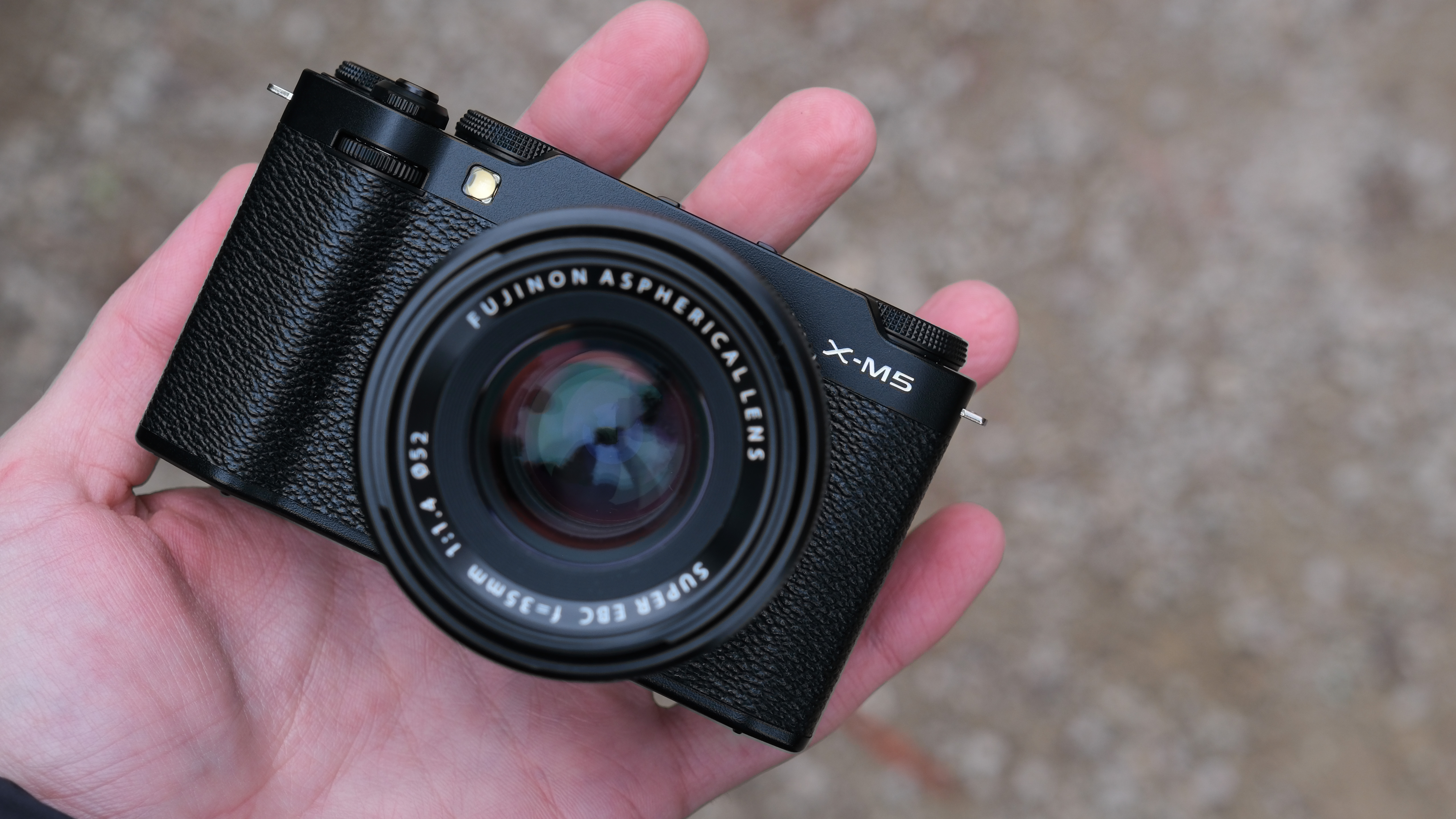
Fujifilm X-M5: Specifications
Sensor | 26.1 MP X-Trans CMOS 4 (APS-C) |
Processor | X-Processor 5 |
Lens Mount | Fujifilm XF |
Viewfinder | None |
Screen | 3.0-in 1.04M-dot vari-angle touch LCD |
Burst speed | 5fps manual shutter / 30fps (1.25x crop) 20fps (no crop) electronic shutter |
Image stabilization | None |
Video | 6.2K30p, 4K60p (1.18x crop), HD240p, 4:2:2 10-bit, F-Log, F-Log2 |
Memory | Single UHS-1 SD slot |
Weather resistant | No |
Fujifilm X-M5: Price
At $799 / £799 / AU$1,449 for the body only or $899 / £899 / AU$1,649 with a Fujifilm XC 15-45mm lens, the Fujifilm X-M5 might just be the best value camera you can buy right now.
Sure there are a couple of super cheap entries from Canon like the EOS R100 (usually $479, but often heavily discounted) – but Canon’s offerings can’t hold a candle to the X-M5’s design and features. You can also go the other way – the Panasonic S9 offers the same compact vlogger-inspired body as the X-M5, but with a full-frame sensor and image stabilization – although at a much steeper $1499.
The true rivals to the X-M5 come from Sony, with the Sony ZV-E10 II going toe-to-toe with the X-M5 for style and features. However, Sony’s model comes in at a not insignificant $200 more than the X-M5 (both body only). I described the ZV-E10 II as the best value vlogging camera when I reviewed it a few months ago – I'll admit when I'm wrong.
Fujifilm X-M5: Design & Handling
Stylistically, the X-M5 isn't a huge departure from the original Fujifilm X-M1. Available in either black or silver, the X-M5 follows the same design as Fujifilm’s other classically styled cameras like the X-T5 or X100VI, with its faux-leather wrapped metal body and dials up top – and despite the lower price, the camera feels excellent in the hand.
I was fully prepared for the camera to feel a lot cheaper than the X100VI I use day-to-day, but it really doesn’t, the X-M5 feels solid and expensive-ly weighty – although it only weighs 355g. I tried hard to find some flaws with the build, but all the dials feel solid, the flaps and battery door feel secure, and the buttons – while a little bit too tiny for my clumsy fingers – have a nice click. The only negative I can raise is that the bottom panel is not one single piece and has a slightly unsightly seam, but honestly, I’m just being pedantic.
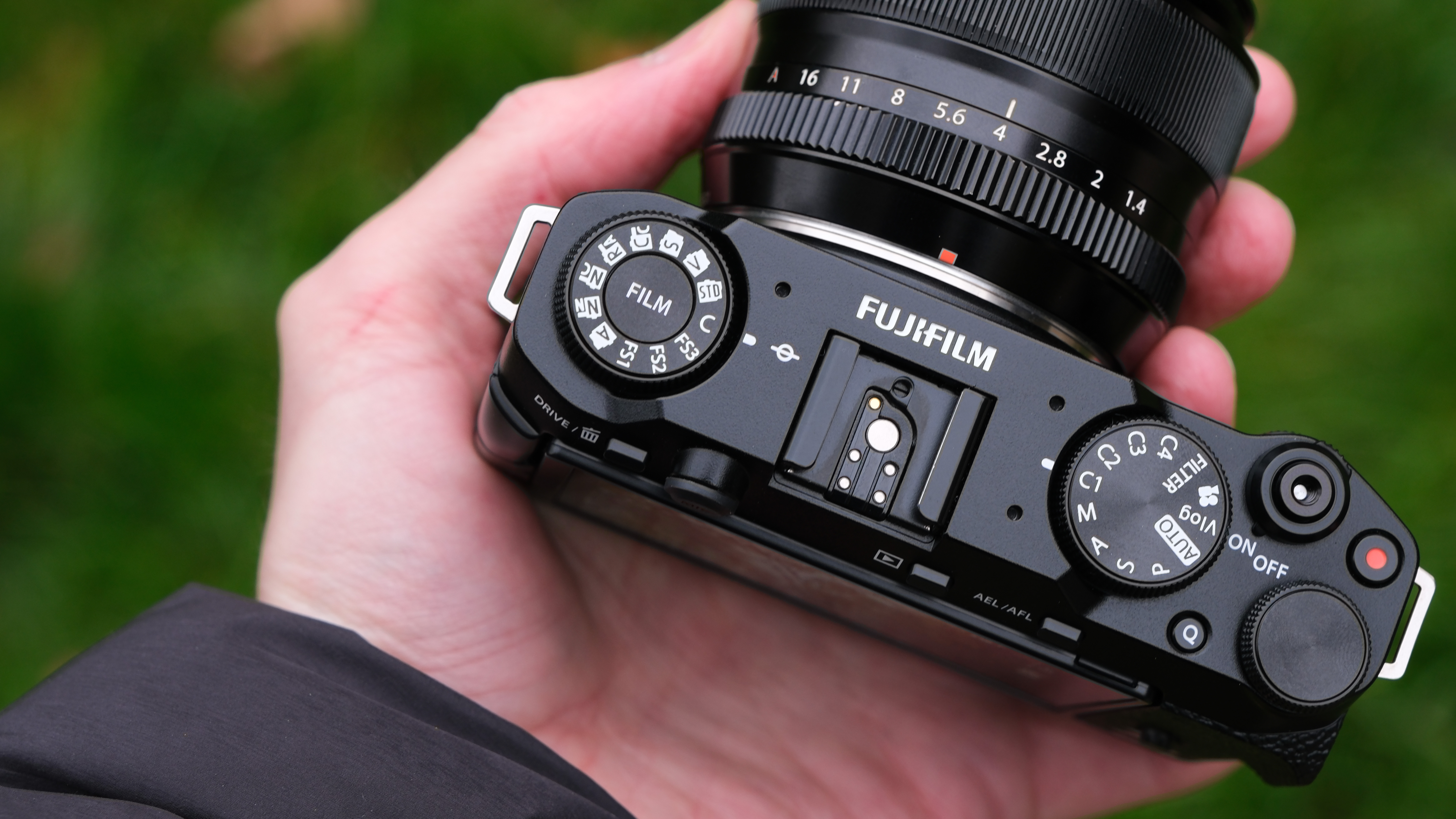
The overall size of the camera is just so small though I could easily slip it into my coat pocket. One of the reasons that the X-M5 is so small and affordable clearly stems from the lack of an electronic or hybrid-optical viewfinder. While the lack of a viewfinder will be a huge disappointment to the contingent of Fujifilm fans holding out for an X-E5, the X-M5 does sport a flip-out rotating screen that is perfect for composing vlogs and other pieces-to-camera, and if you are used to shooting mostly on a phone, then this provides much the same kind of experience.
There is also no longer a built-in flash, another signal that this is more a video camera than a stills one. I find it hard to really care about this, but would have a few years ago at university when a lot more of my photos were at night, but, with tiny hotshoe flashes or LEDs increasingly affordable, there are certainly quick and easy ways around this.
The camera has a very slight raised grip on the front and a thumb grip on the rear, which is just about enough to cling onto, but I did find holding the camera a little awkward, but those with smaller hands might fare better, however, the X-M5 is not as comfortable as the ZV-E10 II.
I am mostly using the camera with Fujifilm’s last generation 35mm f/1.4 and XC 15-45mm lenses, which are the perfect size on this camera, but the camera should also fair well with Fuji’s dinky f/2 prime lenses and would be an absolutely ideal match for the Fujifilm XF 27mm f/2.8 pancake lens (if you can find it in stock).
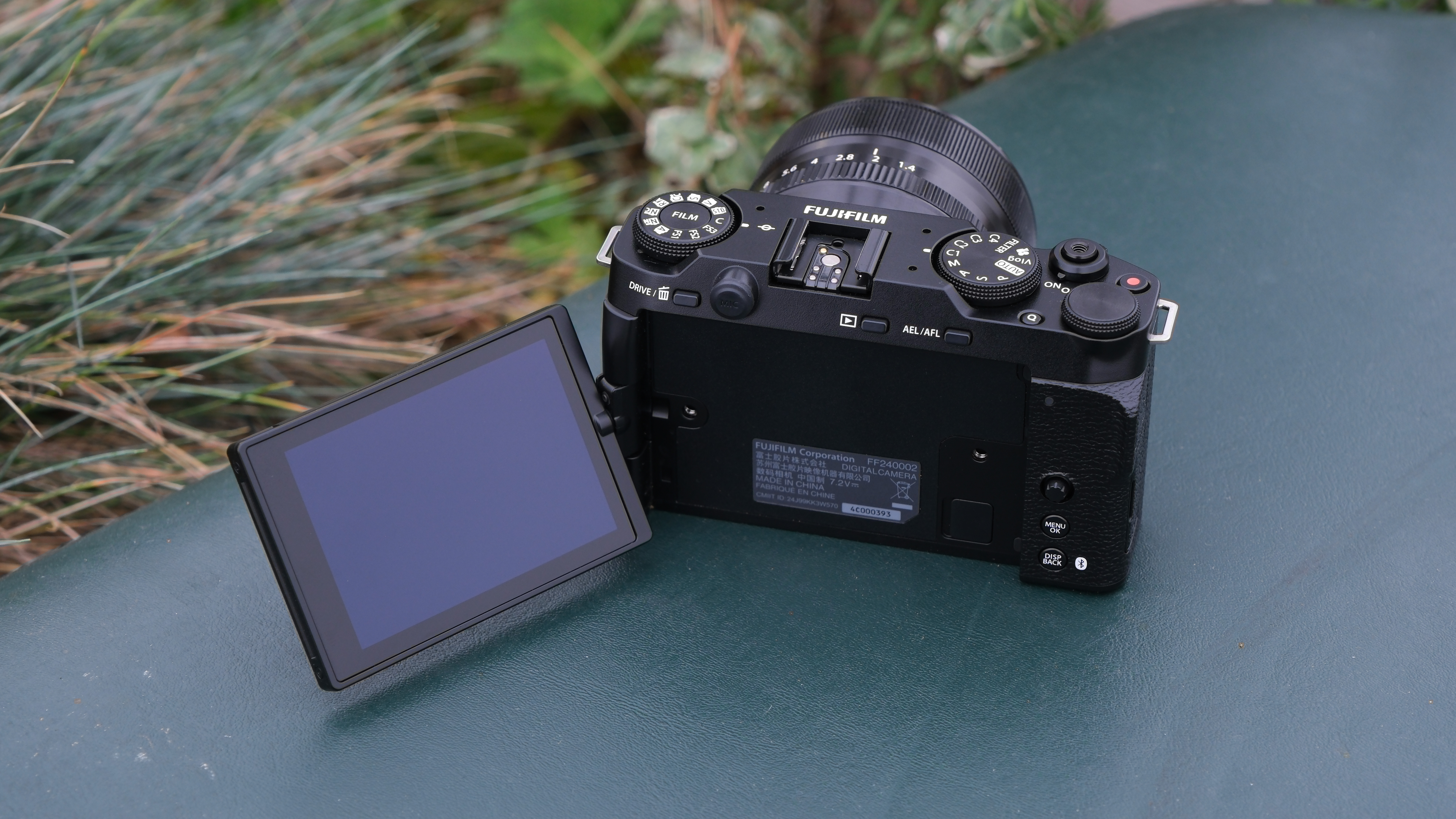
Unfortunately, the kit lens the X-M5 is sold with – the XC 15-45mm lens – is just such a mediocre lens I find it really disappointing that Fuji didn’t at least offer some pricier kits, but with the 27mm or 16-55mm lens as a discounted option. The 15-45mm is not a bad lens at all for just an extra $100, but with its annoying extension when the camera is on, its irritating zoom sound, and its average quality, it will likely leave you itching to upgrade it before long.
Focusing on the X-M5 controls, the rear panel is the biggest departure from the X-M1, with the collection of buttons around the D-pad almost completely phased out in the last generation of Fujifilm cameras. The back is now much more sleek and minimal, with the general button layout in keeping with the rest of the Fujifilm family for easy switching between models, and there is also a welcome addition of Fujifilm’s directional joystick.
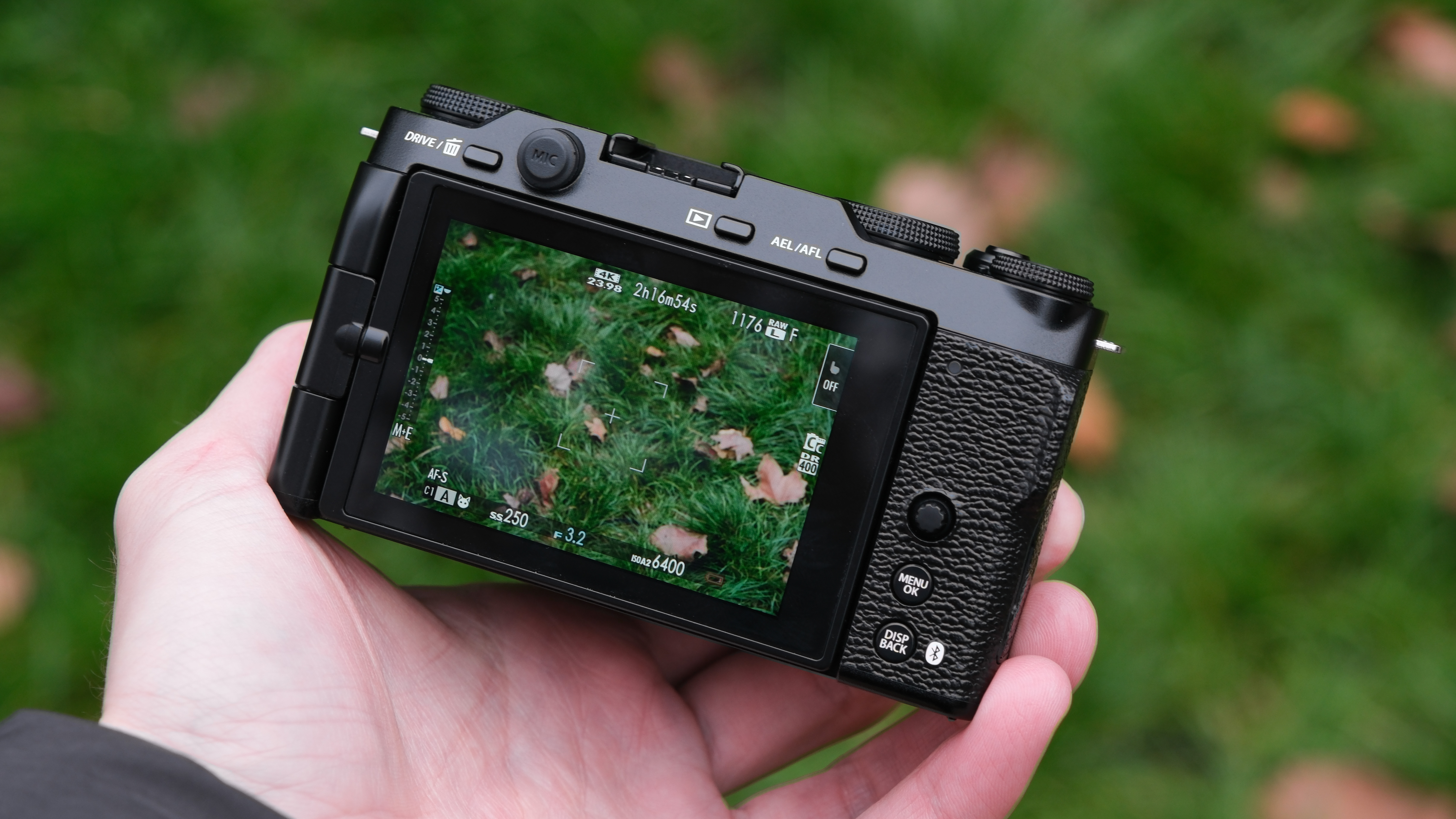
The X-M5 is also the second camera in the Fujifilm lineup to get a dedicated film simulation dial. I have mixed thoughts on this, I don’t love it or hate it – but on a camera like this where manual controls are not the focus and you don’t have to sacrifice a dial – it completely makes sense. But I will say, it does what it's intended to do – it made me change my film simulations more than I would if they were just in the menus.
If you are a film recipe person, then there is a custom option on the dial, which defaults to whichever film simulation you saved in your recipe when creating it – it does not auto-update your saved custom profiles if you accidentally turn the dial, phew! Also, a side note to Fujifilm’s designers; I think that the center part of the dial that doesn’t move would be a fantastic place for another button.
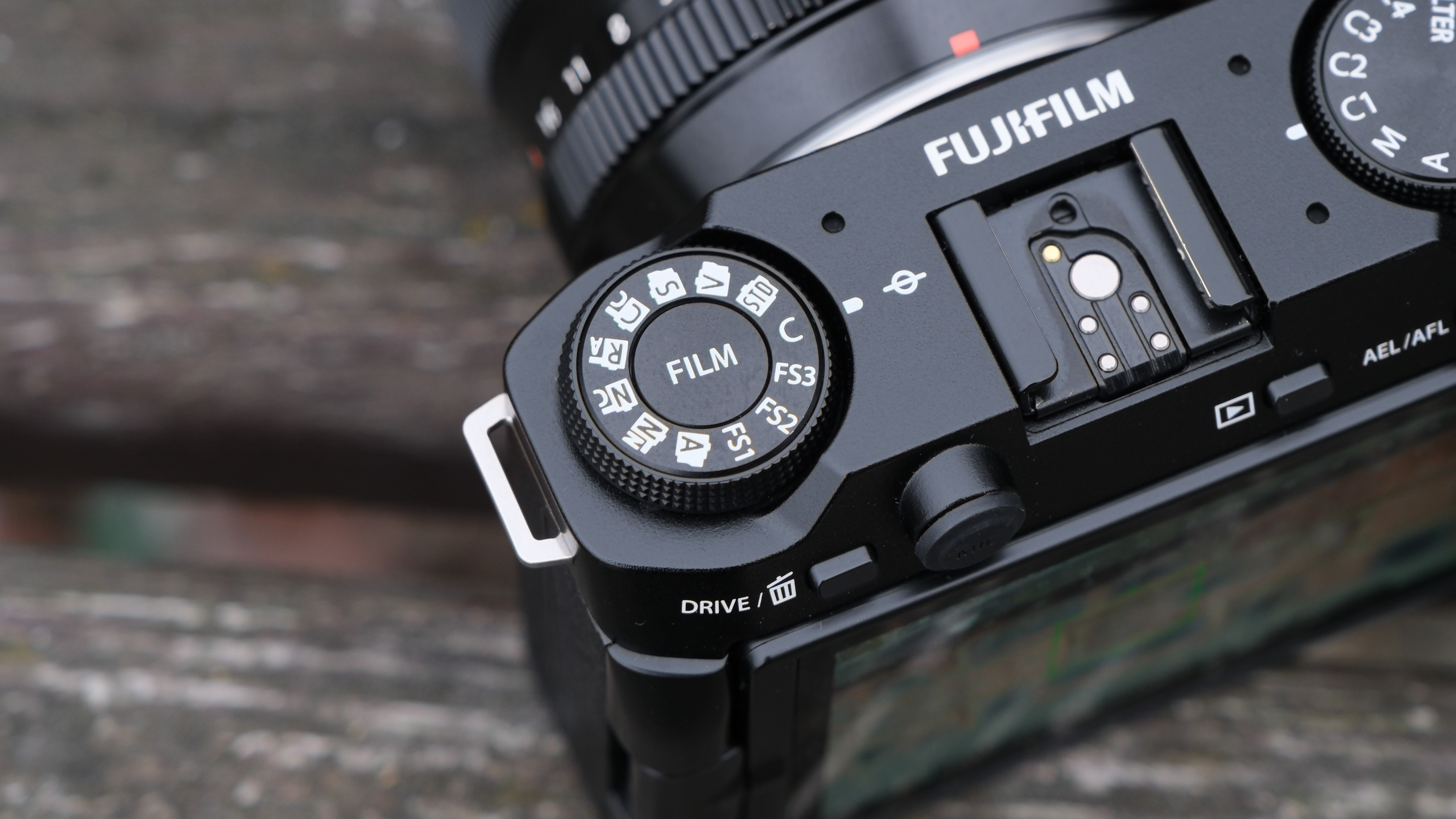
On the other side of the camera, you have a mode dial, which has four options for custom settings (again perfect for recipe enthusiasts), and this is also how you can jump between photo modes, and vlogging or standard video modes.
There is also an unmarked dial that can be customized to a range of functions including aperture, shutter speed, exposure compensation, or curiously despite the new dial – film simulations. And on the front, there is a wheel that can control the same functions, but you can switch between each one by pressing the dial in. You can also turn these dials off completely if you so wish (for example I only ever really shoot in aperture priority, and the lens ring handles aperture, so both my dials only do exposure compensation).
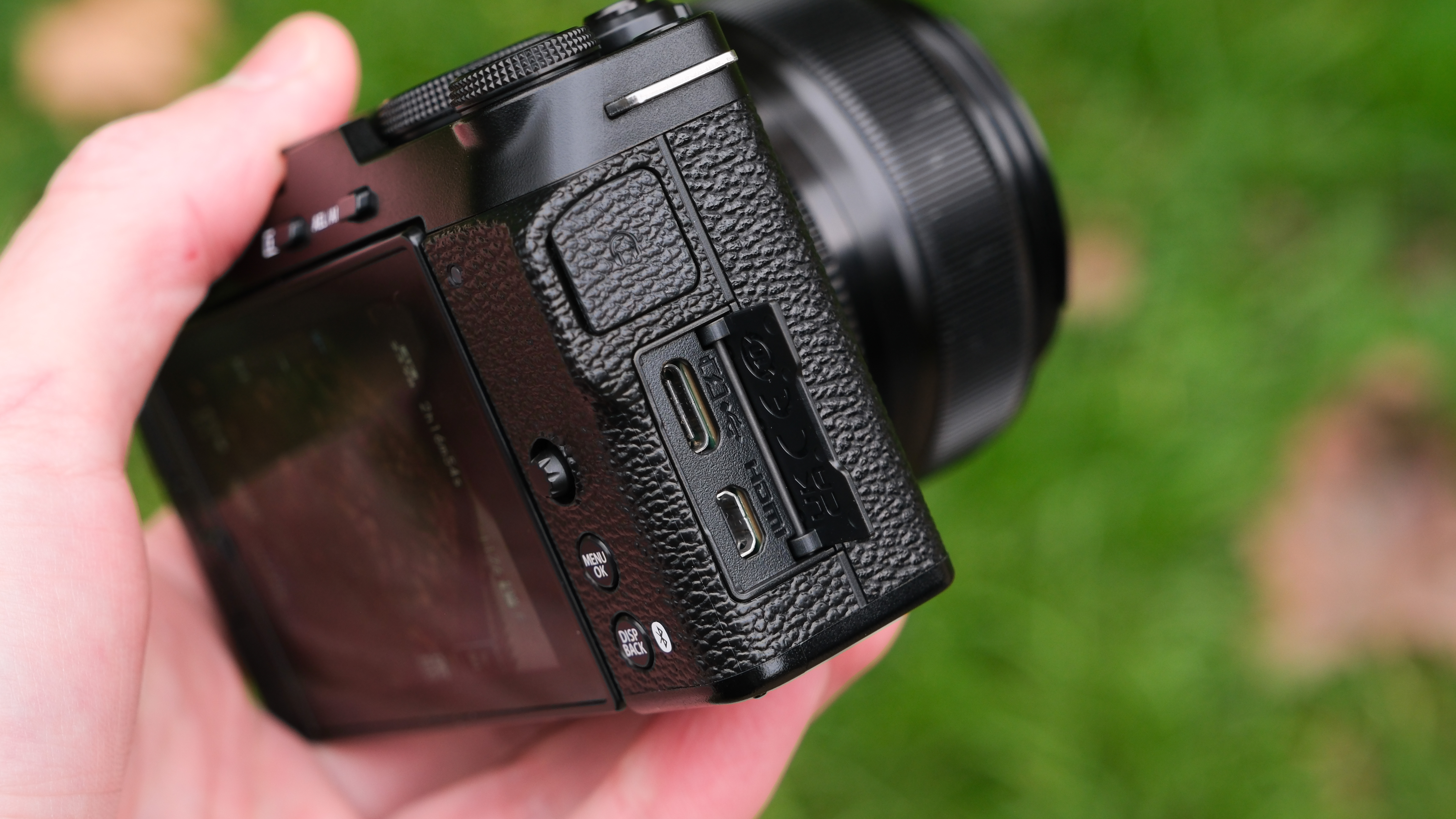
Fujifilm X-M5: Performance
It should really come as no surprise that the image quality out of the X-M5 is excellent when it shares a sensor with so many still beloved Fujifilm cameras like the Fujifilm X-T4 and X-S20. It doesn’t have the resolution of Fujifilm’s newer 40MP sensor, but this doesn’t hold back the X-M5 as for the camera's intended purposes of casual shooting and social media, the 26.1MP sensor is more than enough resolution and a higher pixel count would make images larger and more cumbersome to work with.
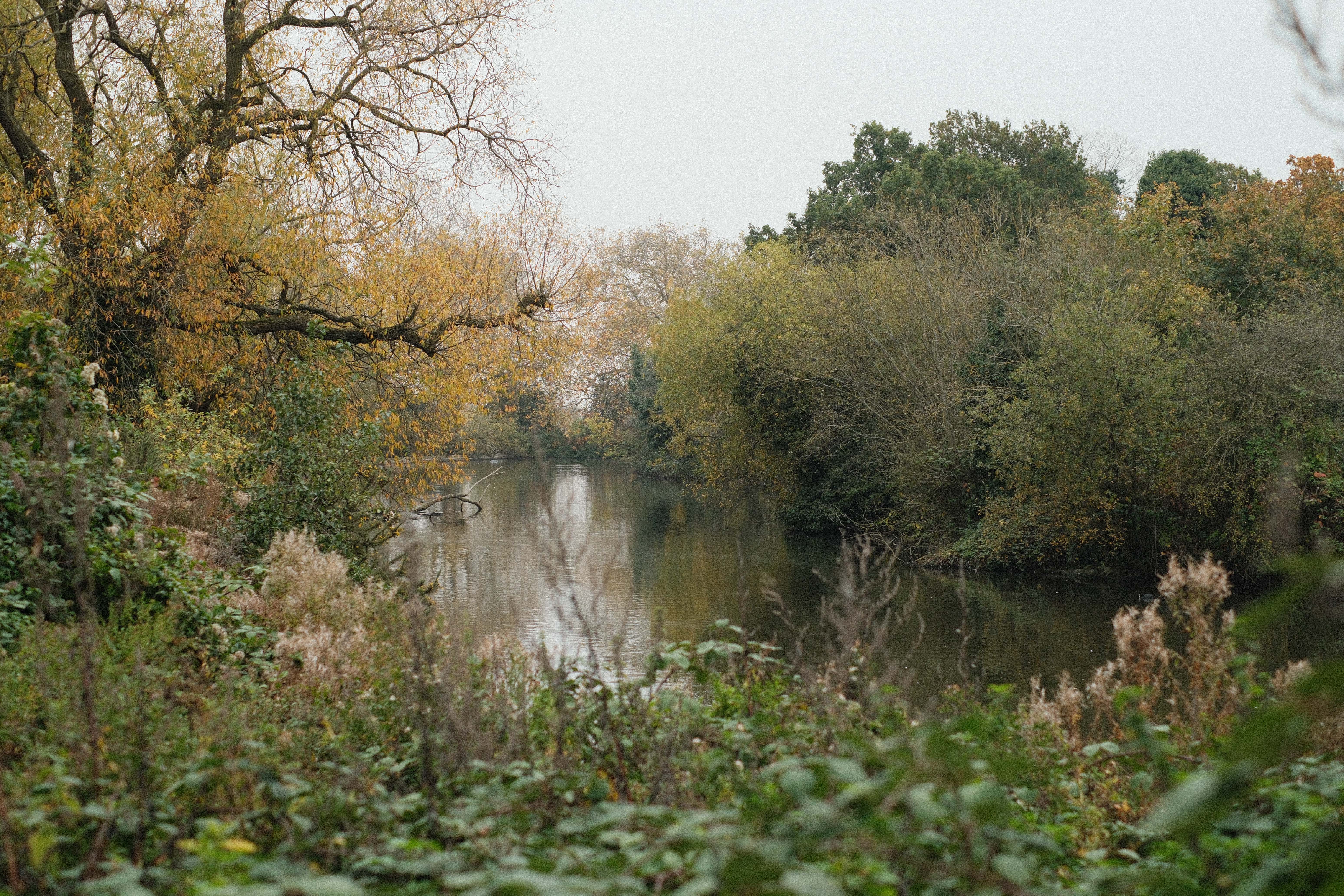
Images straight from the camera are key for the X-M5, and Fujifilm’s processing continues to be excellent, with fantastic color science, and a great dynamic range in standard Provia mode. The real fun comes with tweaking your images though, and there are plenty of options, both from Fuji’s film simulations, but also options like the addition of film-like grain to your images, boosting the dynamic range, or playing with the color chrome effects to change the saturation in skies.
Pansonic and Sony are gunning for Fujifilm here by adding photo LUTs to their cameras for still images, I still find Fujifilm’s system far more simple and intuitive, although more limiting to get in-depth with grading color.
Fujifilm has brought its latest autofocus algorithms to the X-M5 with the inclusion of the X-Processor 5. This means the X-M5 is capable of recognizing subjects including human faces and eyes, as well as animals, birds, insects, cars, and other vehicles. The AF here performs really well, I had no issue picking up birds swimming on the lake in my local park and could detect the eye of a goose who wandered up to me in search of food. Sony chose to leave its AI-coprocessor out of the ZV-E10 II, which limits the subjects it can recognize to just humans and some animals, a decision they might now regret.

The biggest omission that is likely to affect your photography is in-body image stabilization – which will limit how low you can drop your shutter speed before the effects of hand shake starts to creep into your images. In recent models, Fujifilm has offered around 7.0 stops of compensation.
If this matters to you likely depends on both how steady your hands are, and how much you shoot in low light situations, but it certainly isn’t a dealbreaker. Until a few years ago it was rare to even have IBIS in a camera, and no other cameras around this price have IBIS, including Sony’s ZV-E10 II. You can use optical image-stabilized lenses like the XC 15-45mm which will help, but a few other manufacturers do offer more image-stabilized lenses than are in the XF lineup.

The big question is does the lack of a viewfinder make this any less of a photography camera? As someone who usually composes every photo through a viewfinder, I did find this somewhat limited my experience – I just find it far more satisfying to shut out the world around me and focus on only what’s in my frame. For balance, it's a criticism I have also leveled at Sony’s ZV cameras and the Lumix S9. Maybe fewer of Fuji's target market now use viewfinders and this is the future, but I find it hard to believe when analog film cameras have had an explosion in popularity amongst the youngest generations. Overall – as much as I enjoyed the camera, I still wish this was an X-E5 instead.
Fujifilm X-M5: Sample Images



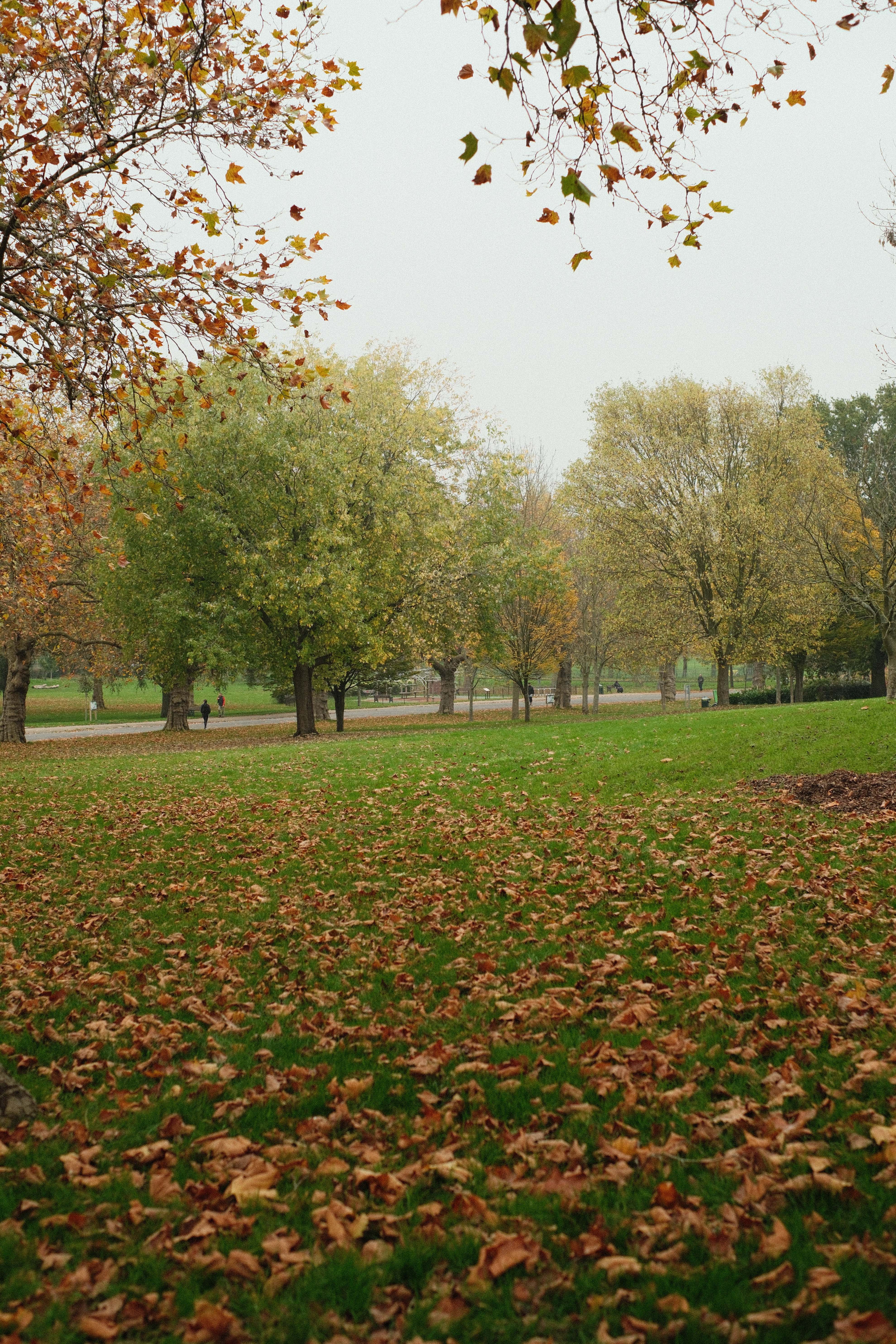




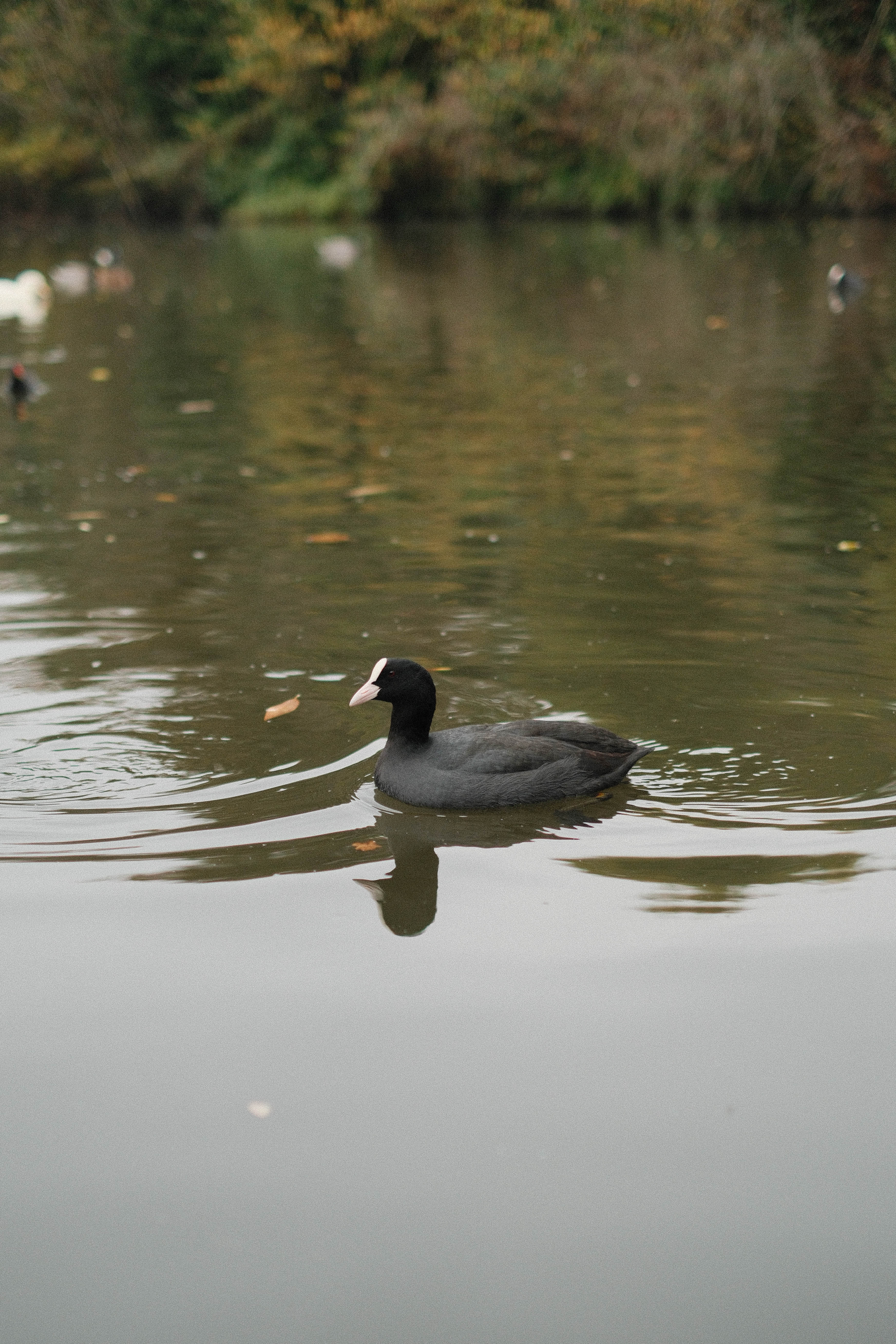





Fujifilm X-M5: Video
Fujifilm is banking a lot on this camera's appeal to video makers, and thankfully X-M5 excels in this area – but the X-S20 set a precedent early last year for what Fujifilm X-series are capable of when it comes to video. Following the blueprint of the X-S20, the newer processor paired with the older sensor (with its fewer megapixels) gives the X-M5 the necessary processing power and speed to produce video up to 6.2K 10-bit open-gate video up to 30p.
If you are unfamiliar with the term open-gate, it refers to the ability to use the entire sensor area, this gives a more uncommon 3:2 ratio to footage rather than the traditional 16:9, but it gives far more flexibility when it comes to cropping later. This is incredibly useful if you want to shoot one video that will be used in more than one place, such as YouTube (horizontal 16:9), TikTok (vertical 9:16), and Instagram (4:5), with 6.2K affording some cropping without losing too much detail.
The options don’t stop there. You can also record in F-Log2 if you want to get in deep with color grading or max out the dynamic range. Other recording options include oversampled 4K up to 30p with no crop, or 4K60p with a 1.18x crop factor. Image quality in video looks great in all of these, and you can also slap on a film simulation to your video to give it an instant look – although like photos this isn’t quite as in-depth as the downloadable LUTs available on other systems.
The vlog modes from the Fujifilm X-S20 have also migrated over to the X-M5, giving the camera a more user-friendly touchscreen interface, with key settings lining the edges of the screen. There are also special modes for showcasing products, jumping the focus to anything that is held up to the camera, smooth skin options for instant in-camera retouching, and a new vertical video mode, that can film a short 1080p vertical video while the camera is horizontal, which might be useful if you don’t want to move the camera.
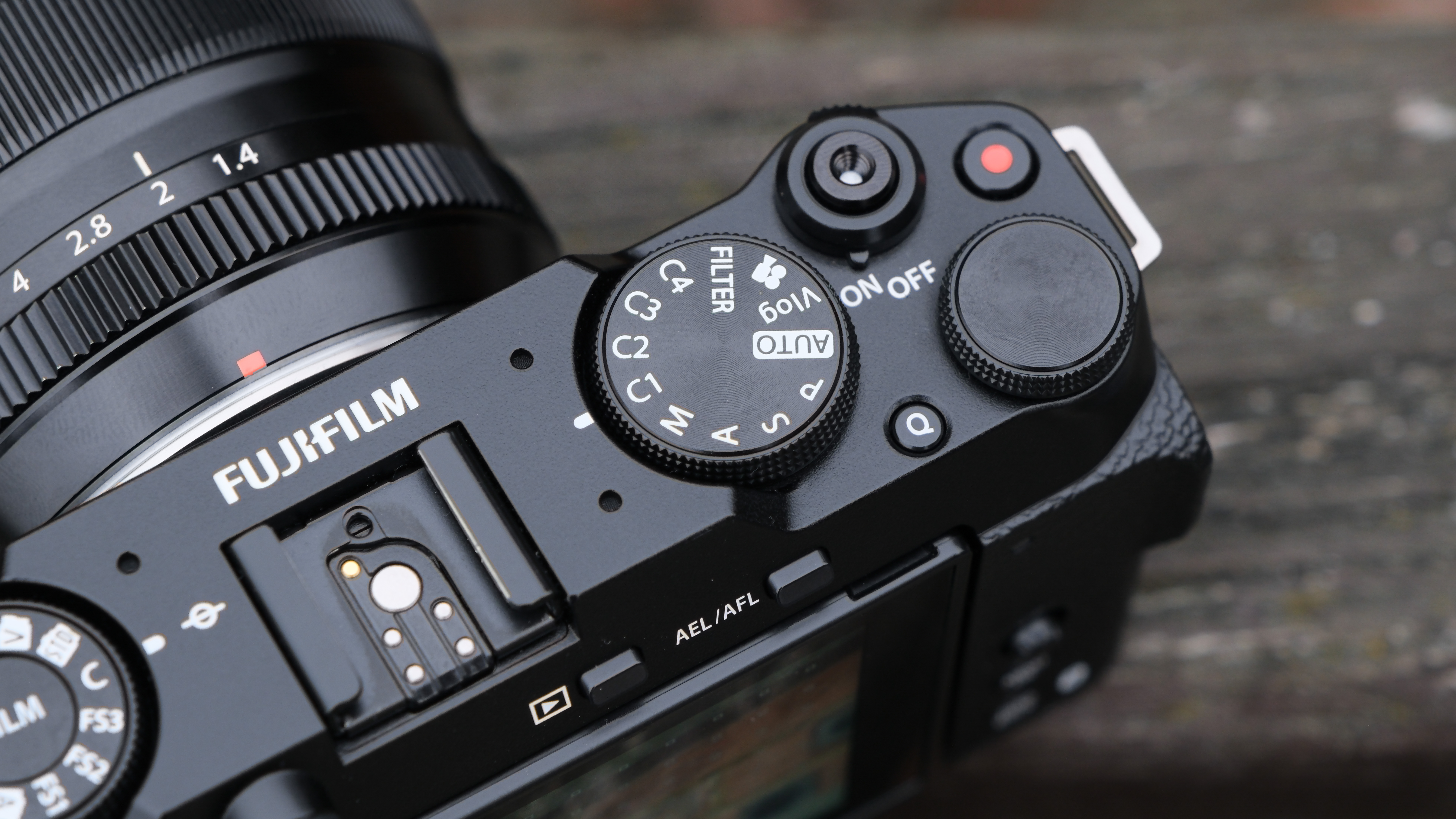
In an effort to take the fight to Sony’s ZV cameras, which have three capsule microphones in the top, that capture far better sound than what you usually get from a built-in mic – Fujifilm has upped the audio capabilities of the X-M5. There are not only more microphones, but you can also change the directional pick-up pattern from omnidirectional (all around) to either isolate noise from behind the camera, in front of it, or both.
I found this to be quite effective, but not perfect – and still nowhere near the quality you would get from using a good external microphone. Outside with lots of road noise, birds chirping, and some wind, the internal mics didn’t quite isolate my voice in my tests as clearly as I would have hoped – although the directional pickup made my voice much clearer than the omnidirectional pattern. If you are really serious about your audio quality, then still my best advice is to pick up an external mic, but for more casual users, this might well be enough tuning for your needs.
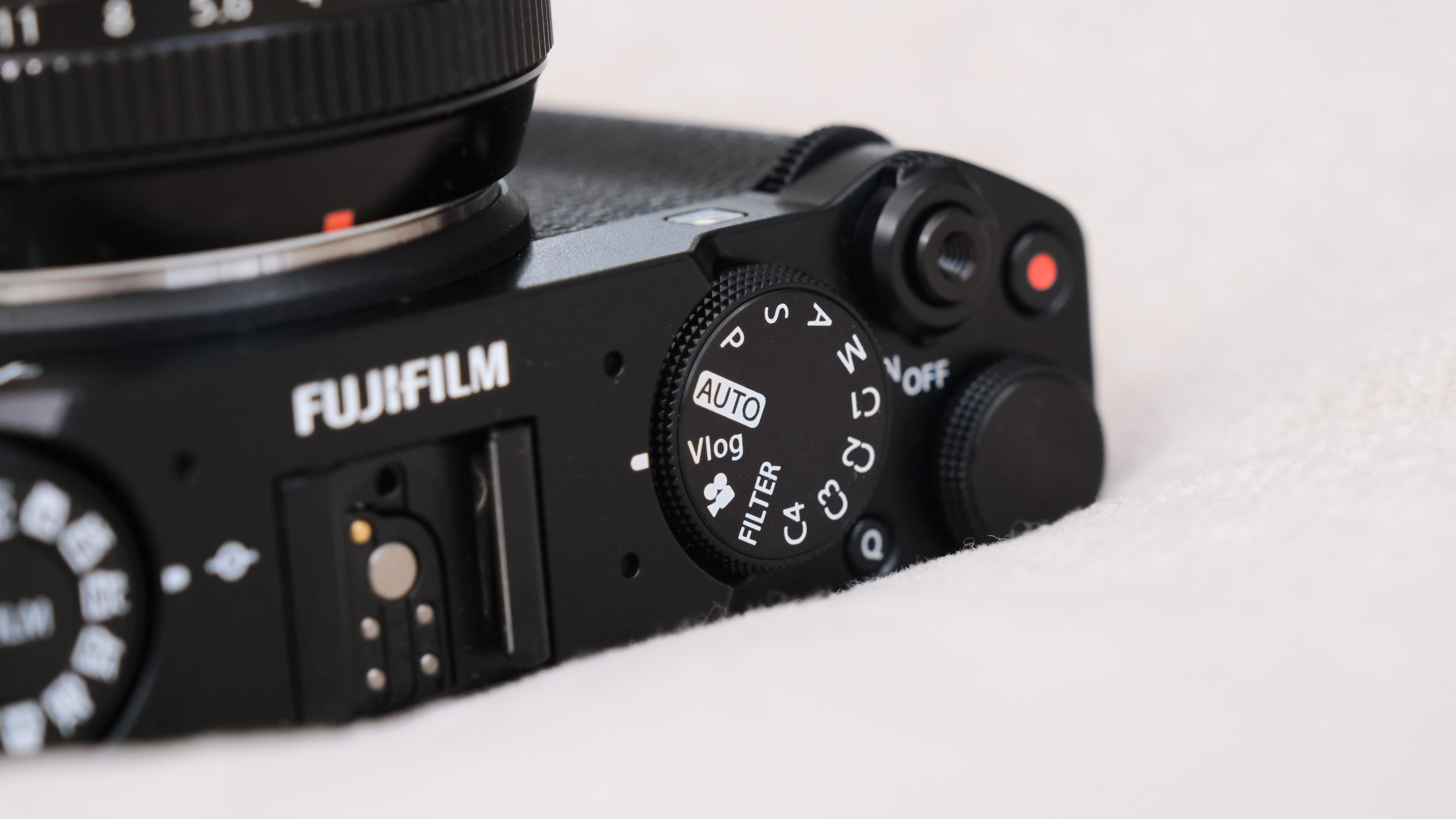
Like with stills, the biggest issue with the X-M5’s video is a lack of in-body Image stabilization. This is obviously fine with a tripod or if you intend to keep the camera static and wouldn’t even be a consideration for say, beauty vlogging. But outside moving about with the camera there is some very noticeable camera movement though. Fujifilm does have a brand new digital image stabilization algorithm, and it works pretty well, although I found it actually overcompensated and made the footage look a bit too rigid.
There is also the major downside of your footage being penalized with a hefty 1.32x crop – the 23mm lens I was using is already a 35mm lens thanks to the APS-C sensor crop, but it becomes a 46mm lens with digital image stabilization applied which is far beyond the focal length I had in mind when I bought it.
Fujifilm X-M5: Lab Data
For our lab data comparison we compared the Fujifilm X-M5 to three similar entry-level APS-C mirrorless cameras: the Canon EOS R50, Nikon Z30, and Sony ZV-E10 II.
Resolution (line widths/picture height):
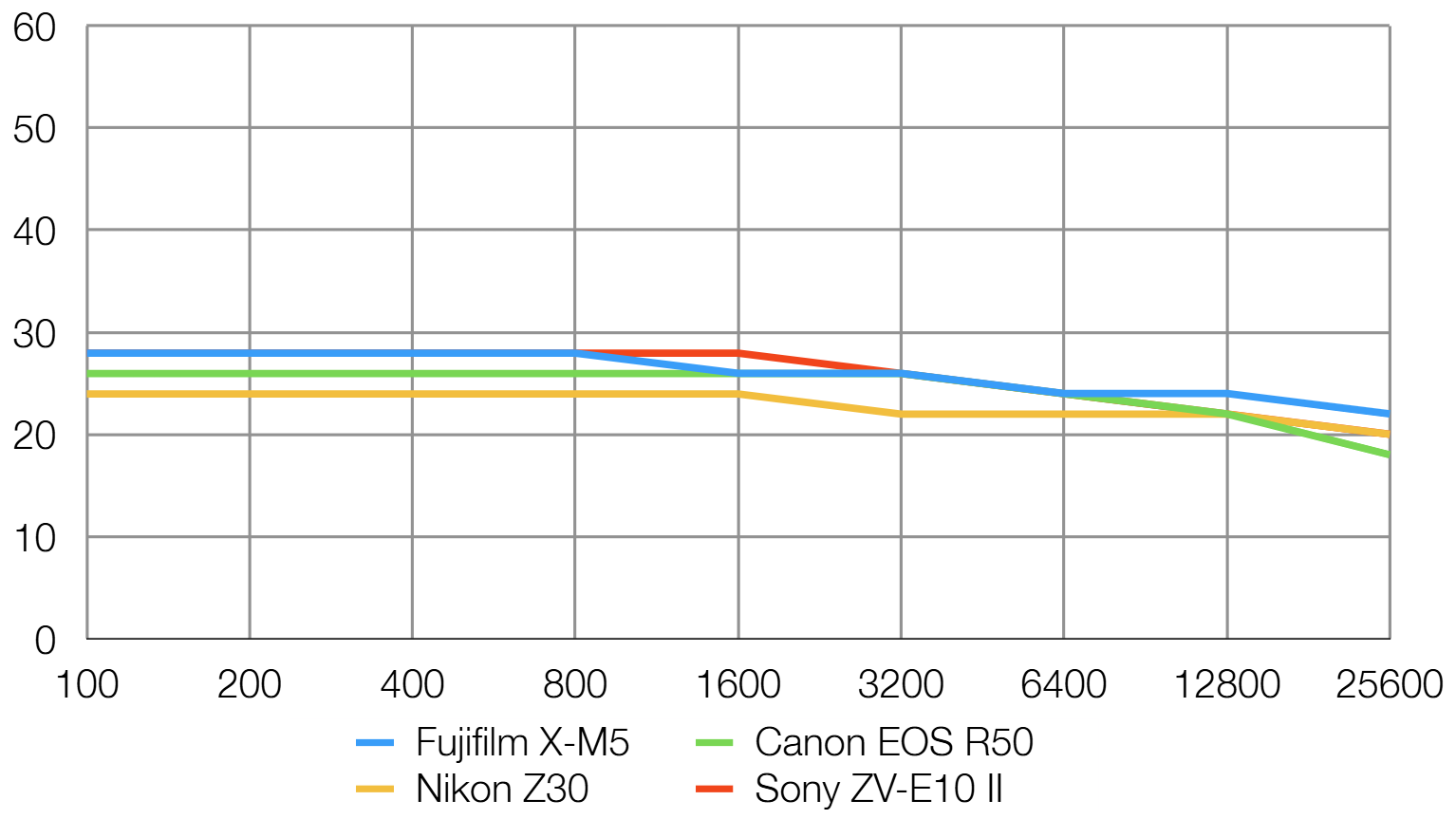
The X-M5 and Sony ZV-E10 II both use 26MP sensors, so it makes sense that they resolve the most fine detail in this test. The 24MP EOS R50 follows close behind, and it's no surprise that 20.9MP Z30 can't match the detail levels of the other cameras in this comparison.
Dynamic range (EV):
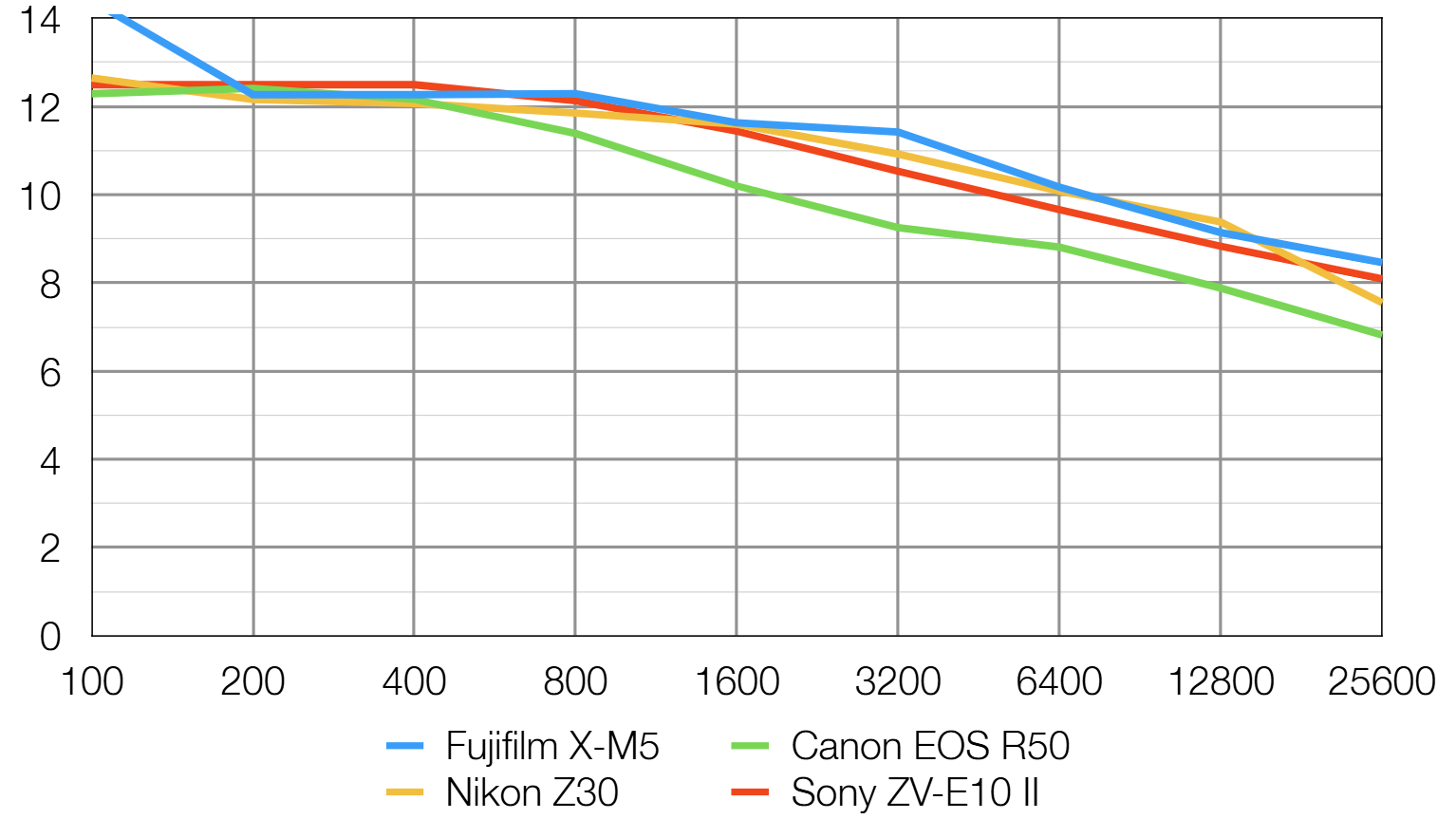
Dynamic range is a measure of a camera's ability to record extreme brightness ranges and still retain detail in the brightest and darkest parts of the scene. It's measured in EV (exposure values, or 'stops').
Fujifilm's X-Trans sensors traditionally perform well in our dynamic range testing, and the X-M5 is no exception. Its sky-high ISO100 score is a little suspicious, but otherwise the X-M5 delivers consistently broad dynamic range throughout the tested sensitivity range, and is especially good at higher ISOs.
Signal to noise ratio (decibels):
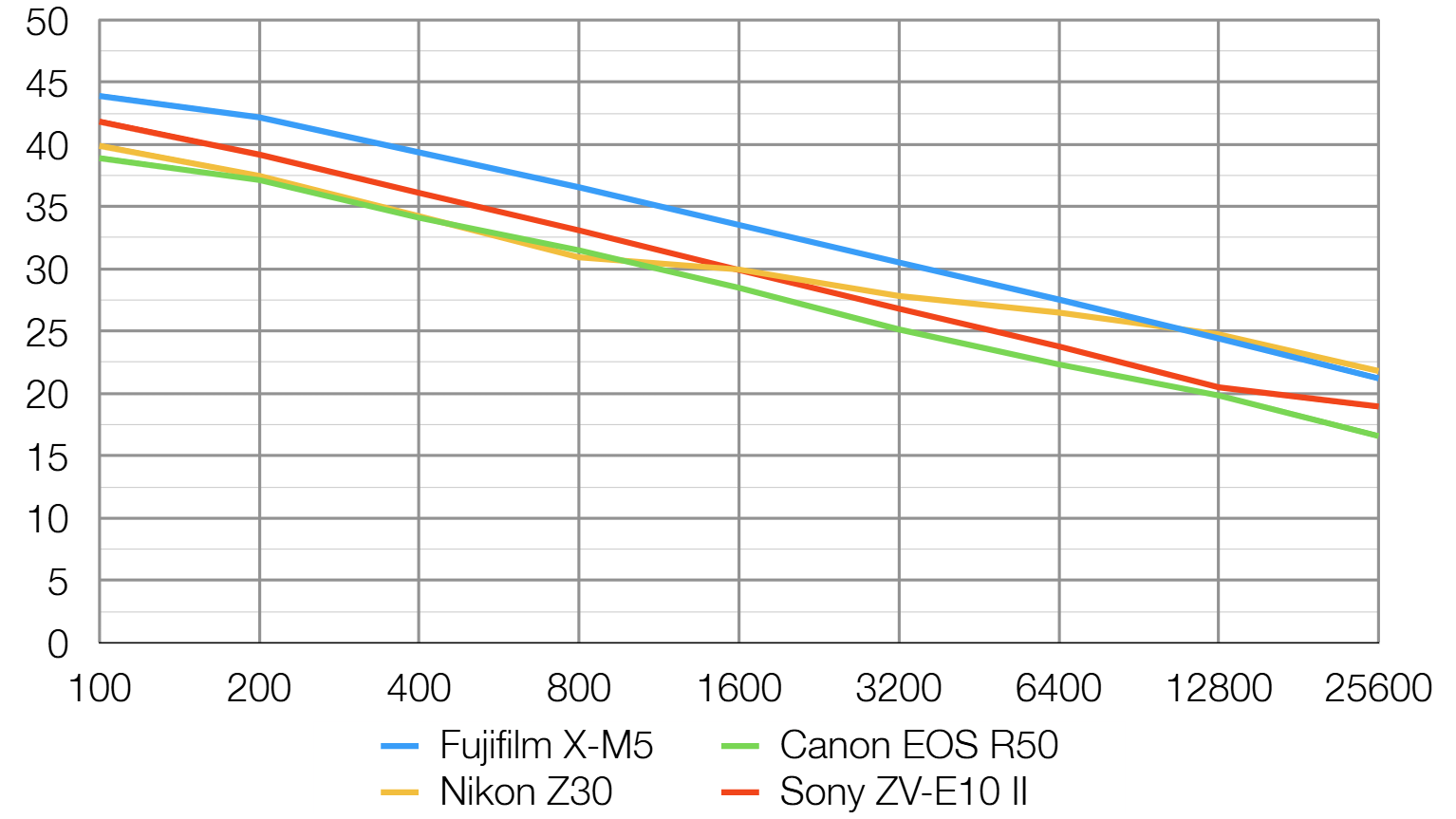
This test compares the amount of random noise generated by the camera at different ISO settings as a proportion of the actual image information (the 'signal'). Higher values are better and we expect to see the signal to ratio fall as the ISO is increased.
The X-M5 delivers the cleanest images of this group, and by a wide margin. The Z30 is just about able to match the Fujifilm camera, but only at very high sensitivities, and only by having a lower-resolution sensor. If low image noise is particularly important to you, the X-M5 is the camera to beat at this price point.
Fujifilm X-M5: Verdict
I was surprised by how much of a good time I had shooting with the X-M5. It's compact, stylish, feels great in the hand, and adds more powerful specs than the direct competition – all while being cheaper than its closest Sony rivals. I think this is currently the best value camera you can buy (new) today.
If you are a vlogger or video maker especially, then this is the camera that should be top of your list for consideration. The video specs for such a small and affordable camera are excellent. Open-gate is going to become increasingly important as the need to make content for several aspect ratios increases, so is a real plus here over rivals, although, video quality in standard 4K isn’t worth jumping ship for if you aren’t already deeply embedded in another manufacturer's system.
When it comes to photography, while I struggle to look past the X-M5 not having a viewfinder, if you are used to taking photos in a phone and composing on a screen then this really won’t be as much of an issue. Autofocus is a breeze thanks to the latest processor giving access to all of Fujifilm’s latest algorithms – not something you get with every manufacturer. And at the end of the day, the images looked just as good as those coming out of my X100VI which cost twice the price.
Features | Powerful video specs and the latest AF | ★★★★★ |
Design | Solid-feeling compact body with small lenses to match. Although no EVF for photographers | ★★★★☆ |
Performance | Great quality stills and video, with film simulations offering ready-to-share content | ★★★★★ |
Value | Undercuts rivals on price but not on power | ★★★★★ |
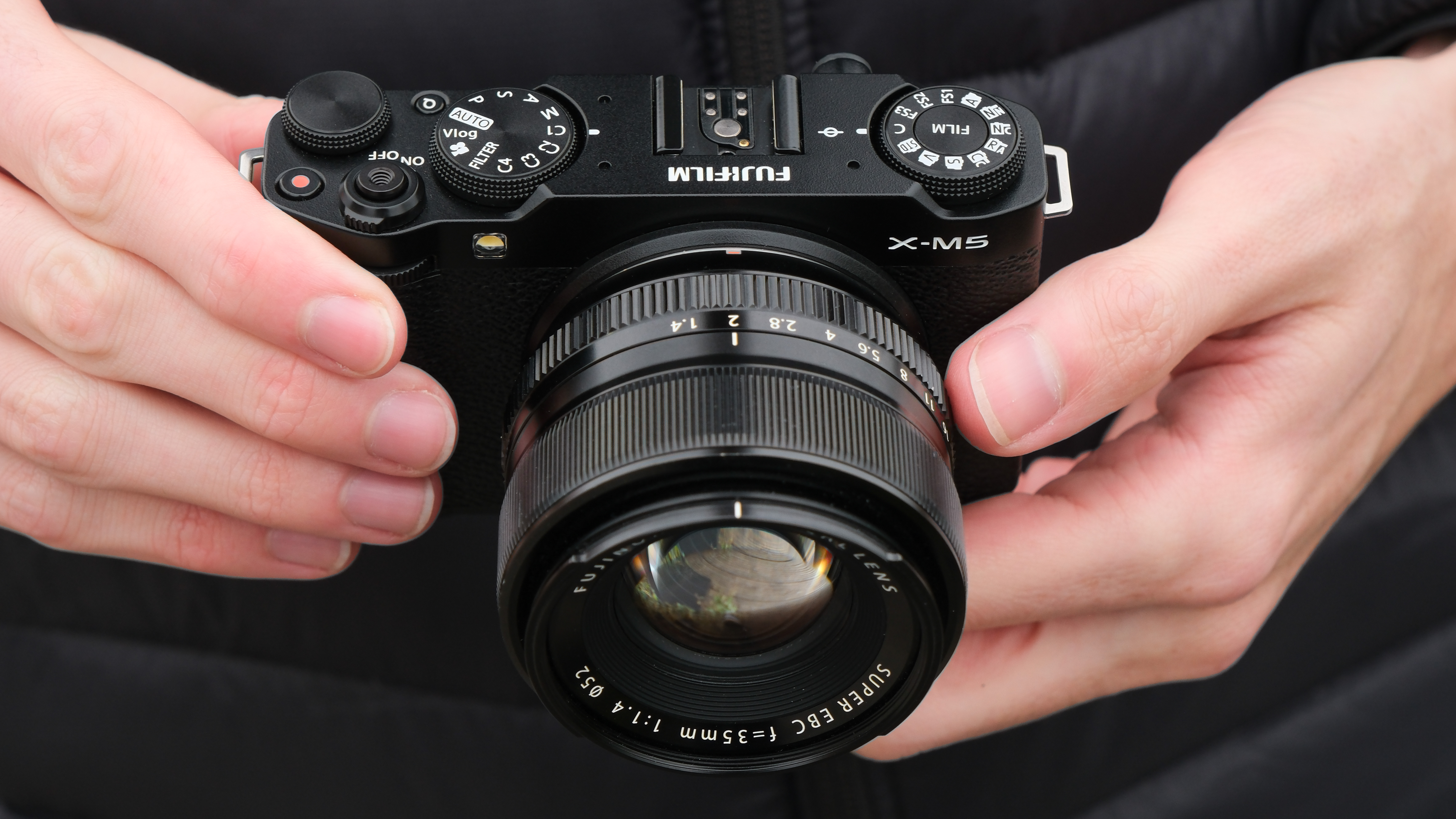
✅ Buy it...
- If you are a social media content creator then this is an excellent small travel-able camera that also takes fantastic photo and video made for sharing.
🚫 Don't buy it...
- If you are primarily a photographer and not all that interested in video then the X100VI or T-T30 II might be more up your street, or you can try and find an X-E4 second hand.
Alternatives
Sony ZV-E10 II: the most direct competitor to the X-M5 can only offer 4K video as its top option. Fujifilm has also closed the ZV range headstart on audio with improved microphones. But perhaps most importantly – the X-M5 is around $200 cheaper (without a lens).
Read the full review...
Nikon Z30: the often overlooked Z30 is an even more affordable alternative to the X-M5, although can't quite match the specs. However, with the improved Nikon Z50 II just being announced, you might be best waiting to see if a Z30 II is in the works.
Read the full review...

Gareth is a photographer based in London, working as a freelance photographer and videographer for the past several years, having the privilege to shoot for some household names. With work focusing on fashion, portrait and lifestyle content creation, he has developed a range of skills covering everything from editorial shoots to social media videos. Outside of work, he has a personal passion for travel and nature photography, with a devotion to sustainability and environmental causes.

